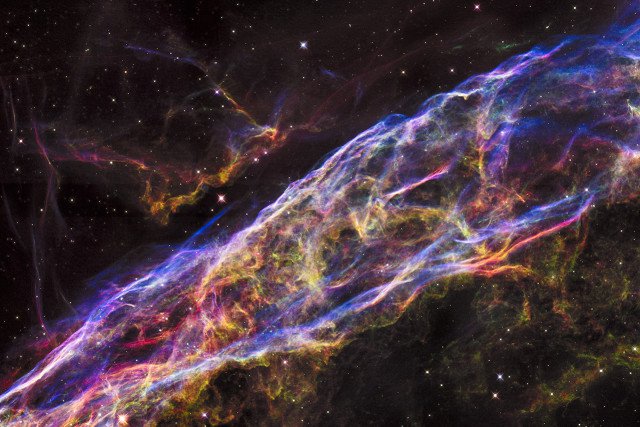-
Tips for becoming a good boxer - November 6, 2020
-
7 expert tips for making your hens night a memorable one - November 6, 2020
-
5 reasons to host your Christmas party on a cruise boat - November 6, 2020
-
What to do when you’re charged with a crime - November 6, 2020
-
Should you get one or multiple dogs? Here’s all you need to know - November 3, 2020
-
A Guide: How to Build Your Very Own Magic Mirror - February 14, 2019
-
Our Top Inspirational Baseball Stars - November 24, 2018
-
Five Tech Tools That Will Help You Turn Your Blog into a Business - November 24, 2018
-
How to Indulge on Vacation without Expanding Your Waist - November 9, 2018
-
5 Strategies for Businesses to Appeal to Today’s Increasingly Mobile-Crazed Customers - November 9, 2018
Hubble zooms in on remnants of Veil Nebula
The Veil Nebula, captured by the Hubble Space Telescope, gets its name from the intricate, lace-like filamentary structures that make up its body. The nebula is located around 2,100 light-years away in the constellation Cygnus, the Swan.
Advertisement
These remnants come from a star NASA says was 20 times that of our sun, and the light show is produced by the fast-moving gaseous remnants of the star’s explosion running into low-density gas that had been expelled by the star when it was dying before it went supernova.
Despite being incredibly bright, the Veil Nebula is hard for astronomers to view because it is spread over a massive area – it’s 110 light-years wide.
The Hubble Space Telescope took a new image of the Veil Nebula, a supernova remnant from a star that exploded 8,000 years ago, and made this truly spectacular flyover visualization of the lovely ripple in space that you can see below.
“The image shows an incredible array of structures and detail from the collision between the blast wave and gas and dust that make up the cavity wall”, NASA said in a statement.
Advertisement
To see the Veil Nebula in 3D, use red-blue glasses. It’s so huge that this image is merely a mosiac of Hubble pictures that together cover about two light years. NASA believes the star that created the doughnut-shaped nebula exploded about 8,000 years ago and that its fiery death could have been witnessed by ancient cultures here on Earth, where the event would have been as bright in our sky as a crescent moon.




























